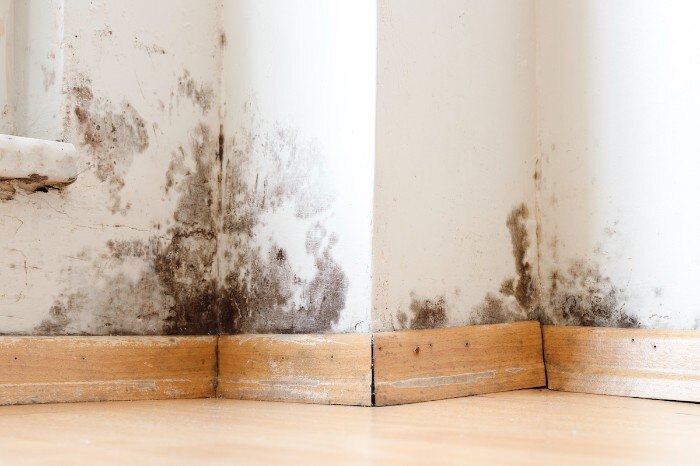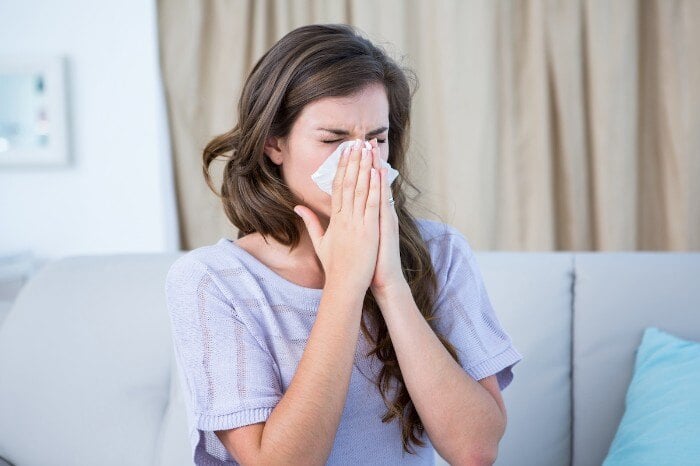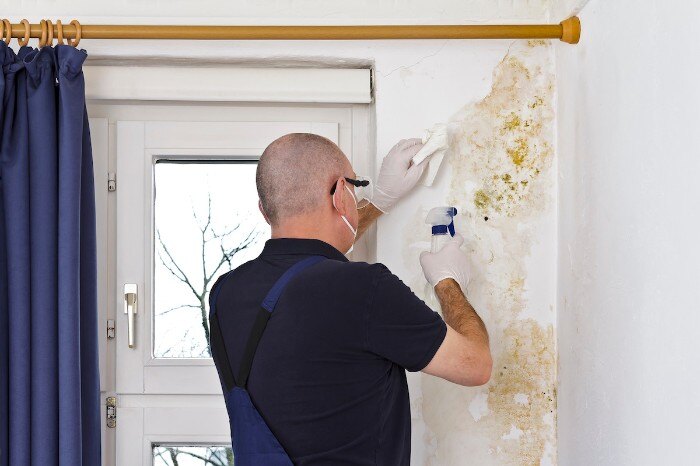
Most people are familiar with the visible signs of mould growth, such as the greenish-black patches that can form on walls and ceilings, typically brought on by leaks and other types of water damage.
However, many property owners don't realize that microscopic spores cause that mould. Mould spores float through the air in search of a suitable environment to establish new colonies; once they settle on a damp or organic surface, they can grow and multiply. Any home with an excessive moisture problem can be a prime breeding ground for mould.
These mould spores are so tiny that one can easily inhale them since they travel through the air. Often, these spores are harmless, but in excess, they can pose a severe health risk. If there is long-term exposure, they can cause respiratory problems and allergic reactions.
Symptoms of Excess Mould Exposure

Many homeowners who discover mould growth report allergic rhinitis or hay fever-type symptoms, such as a runny nose. Many also experience the following health problems:
- Eye and throat irritation
- Phlegm buildup
- Coughing, sometimes accompanied by wheezing or shortness of breath
- Allergic responses, such as a skin rash
- Exacerbated asthma symptoms, and even asthma attacks
If you are experiencing any of these symptoms, it may indicate mould growth in your home. To avoid these adverse health effects, you can take steps to ensure that mould does not have a chance to form on your property in the first place.
How to Mediate the Presence of Mould and Mould Spores

Monitoring the moisture levels in your home is crucial to prevent mould growth. To do so, try some of the following tips:
- Control the indoor humidity levels. You should keep it between 30 and 50 percent at all times.
- Ventilate areas that might produce moisture, such as the bathroom, laundry room, and kitchen. Use exhaust fans to ensure these rooms have good airflow.
- During the months when the relative humidity is high, utilize your air conditioning system to increase air circulation. Using dehumidifiers can also help remove moisture from indoor air.
- Air purifiers can also help ensure spores aren't as abundant in your home. They remove pollutants and provide fresh air so you can breathe freely.
- Change your air conditioner filter regularly. You may also want to use air-conditioning drip pans for added measure.
- Fix plumbing leaks if you have any, as they can contribute to indoor mould growth.
As part of routine maintenance, check for staining on walls or ceilings, peeling paint, moisture in attics or crawl spaces, plumbing leaks, and wet building materials. If you find evidence of water damage, you may want to dry the area thoroughly and remove any wet materials. If mould has already started to form, follow these steps to mediate it:
- Using personal protective equipment (PPE) like gloves and goggles, collect all mould-damaged items and seal them in plastic sheeting. Remove these items from your home and dispose of them properly.
- Using a high-efficiency particulate air (HEPA) certified vacuum cleaner, vacuum all surfaces in the home carefully, including all salvageable furniture, like mattresses and couches.
- Ensure all wet areas are moisture-free; use dehumidifiers and air movers to dry out your space.
- If mould has grown on hard surfaces like wood, tile, or concrete, you can scrub them with a solution of warm water and unscented soap. You can also use baking soda, but do not use bleach.
- If mould has started to grow on your walls, you can use the same solution and scrub the affected areas gently. If the mould has grown into the paint or drywall underneath, you might need to have it replaced entirely.
If the damage is contained to a small or medium area, you can clear it out on your own. However, more often than not, professional assistance is required to mitigate mould growth fully.
Call PuroClean for All of Your Mould Remediation Needs
If you've discovered mould damage in your home or office, it's essential to act quickly to mitigate the problem. PuroClean offers a comprehensive mould remediation service that will remove all traces of mould from your property and help to prevent future growth. Our certified technicians will work quickly and efficiently to contain the mould and prevent further spread. Call us today at (877) 261-7876 or visit our website to find a location near you.
